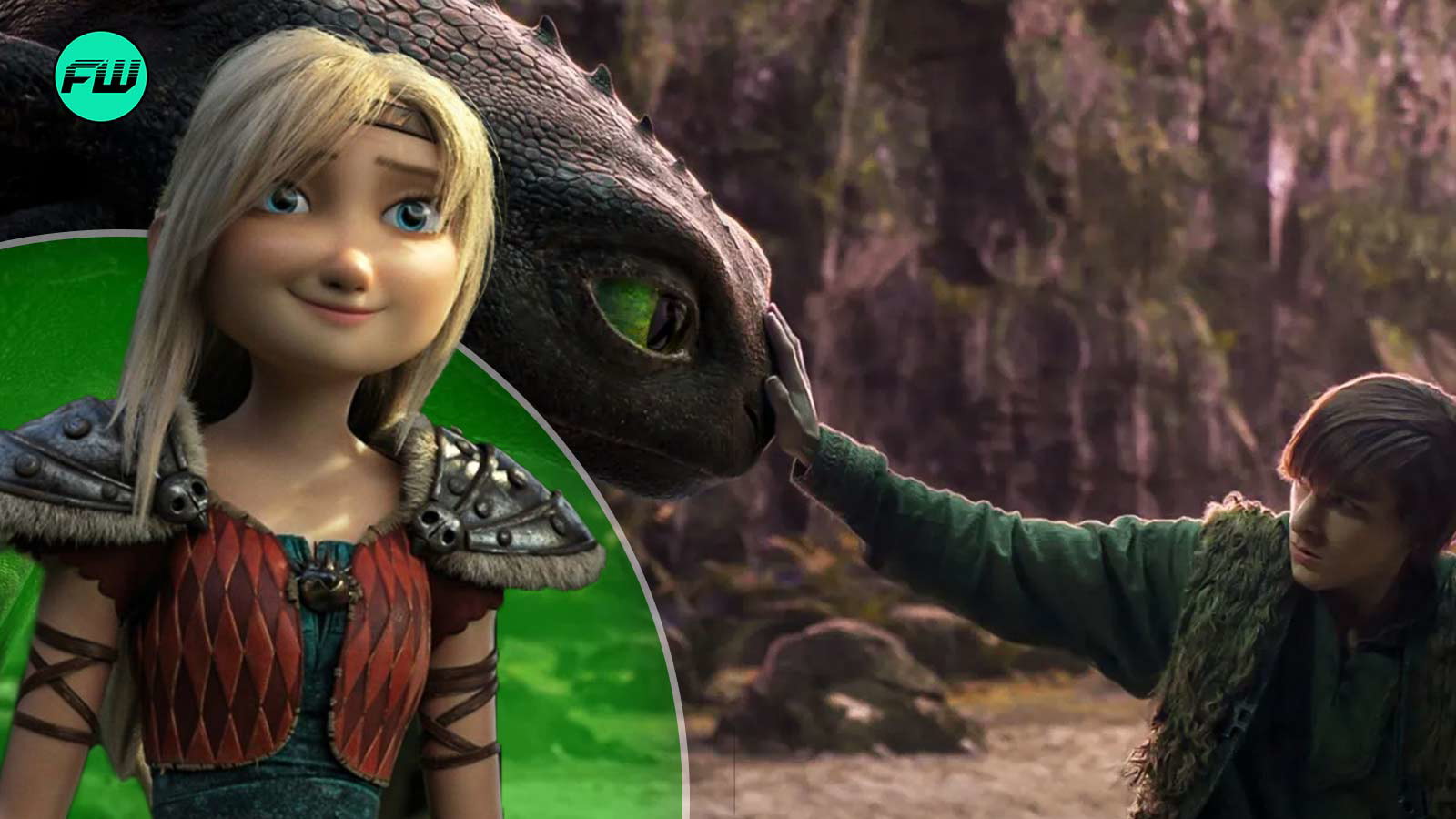How To Train Your Dragon Live-Action: Examining A Potential Point Of Controversy

Table of Contents
Maintaining the Heart of the Animated Original
The success of the How to Train Your Dragon live-action film hinges on its ability to capture the spirit of the original animation. This is a significant challenge, as the animated style contributed significantly to the emotional impact of the story. Key aspects that need careful consideration include:
-
The Expressive Animation Style: The original films utilized a distinctive animation style that conveyed a wide range of emotions with subtlety and nuance. Replicating this expressive quality in live-action, relying heavily on CGI and actor performances, will be a crucial test. Can the same emotional depth be achieved without the expressive fluidity of animation?
-
Character Design and Authenticity: The whimsical and endearing character designs of Hiccup, Toothless, and the other characters are iconic. Grounding these designs in a realistic setting without losing their charm presents a considerable design challenge. Will the live-action versions feel authentic to the originals, or will they feel too different?
-
The Hiccup-Toothless Bond: The core of the How to Train Your Dragon story lies in the deep bond between Hiccup and Toothless. This relationship, beautifully portrayed through animation, needs to translate convincingly to live-action. Can the chemistry between actors and the CGI dragon convincingly mirror the original's emotional resonance?
-
Spiritual and Mystical Elements: The original films subtly incorporated spiritual and mystical elements. How these are handled in the live-action adaptation will be crucial. Will the filmmakers maintain the sense of wonder and magic, or will they opt for a more grounded, realistic approach that might diminish the film's unique atmosphere?
-
Balancing Realism and Fantasy: The world of How to Train Your Dragon seamlessly blends realism and fantasy. The live-action adaptation needs to carefully balance these elements to avoid jarring inconsistencies. Too much realism might diminish the fantastical aspects, while too much fantasy might feel unbelievable.
The Visual Effects Challenge and Potential for Backlash
The visual effects are arguably the most critical and potentially controversial aspect of the How to Train Your Dragon live-action adaptation. Creating believable dragons—creatures of immense size, power, and unique characteristics—is a monumental task that can easily go wrong:
-
The Uncanny Valley: The risk of falling into the "uncanny valley" is very real. If the dragons look almost realistic but slightly off, they could appear unsettling and detract from the film’s overall appeal. This is a well-known pitfall of advanced CGI, and the high expectations surrounding this adaptation will magnify this risk.
-
Realistic Dragon Movement and Expression: The dragons in the original films moved with grace and expressiveness. Achieving this level of realism in live-action CGI is a significant technical undertaking, requiring cutting-edge technology and highly skilled animators.
-
Budgetary Constraints: The quality of the visual effects will be heavily influenced by the budget allocated to the project. Insufficient funding could compromise the realism and expressiveness of the dragons, potentially leading to viewer disappointment and criticism.
-
Technological Advancements: The creation of convincing dragon designs necessitates advancements in CGI technology. The need for innovative solutions to render believable scales, movements, and interactions will be key.
-
Learning from Past Adaptations: Examining the successes and failures of other animated-to-live-action adaptations, noting the CGI used, offers valuable lessons for the How to Train Your Dragon team. Analyzing these past productions provides a roadmap for avoiding common pitfalls.
Balancing Fan Expectations and Creative Vision
The How to Train Your Dragon fanbase is passionate and deeply invested in the original trilogy. Managing their expectations while also allowing for creative freedom presents a delicate balancing act:
-
Meeting High Expectations: The filmmakers face immense pressure to deliver a film that lives up to the high expectations of dedicated fans. Disappointment could lead to strong negative reactions.
-
Creative Liberties and Controversy: While staying true to the source material is essential, some creative liberties are inevitable in any adaptation. These changes could spark controversy among fans who are protective of the original films.
-
Addressing Nostalgia: The film needs to satisfy viewers who cherish the nostalgia associated with the original trilogy while simultaneously appealing to a new generation of audiences unfamiliar with the source material.
-
Learning from Successful Adaptations: Studying successful adaptations of other beloved animated properties can provide valuable insights into navigating these challenges. Analyzing what worked and what didn’t can inform decision-making for this adaptation.
Conclusion
The How to Train Your Dragon live-action adaptation faces significant hurdles in translating the magic of the animated films to a new medium. From maintaining the emotional core to mastering challenging visual effects and managing fan expectations, the filmmakers face a complex task. The success of this How to Train Your Dragon live-action film hinges on its ability to carefully address these potential points of controversy. Let's discuss: What are your biggest concerns and hopes for the How to Train Your Dragon live-action movie? Share your thoughts in the comments below!

Featured Posts
-
 Rome Open Sabalenka And Gauff Navigate Challenges Advance
May 13, 2025
Rome Open Sabalenka And Gauff Navigate Challenges Advance
May 13, 2025 -
 Predicting The Dodgers Vs Cubs Game Key Factors And Analysis
May 13, 2025
Predicting The Dodgers Vs Cubs Game Key Factors And Analysis
May 13, 2025 -
 Byd V Evrope Trhly Start A Cesta K Uspechu S Hybridy
May 13, 2025
Byd V Evrope Trhly Start A Cesta K Uspechu S Hybridy
May 13, 2025 -
 Colombia Pension Reform At Risk Amid Corruption Allegations
May 13, 2025
Colombia Pension Reform At Risk Amid Corruption Allegations
May 13, 2025 -
 Myanmars Military Junta A Critical Analysis Of Britain And Australias Response
May 13, 2025
Myanmars Military Junta A Critical Analysis Of Britain And Australias Response
May 13, 2025
